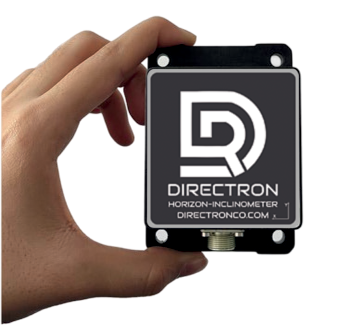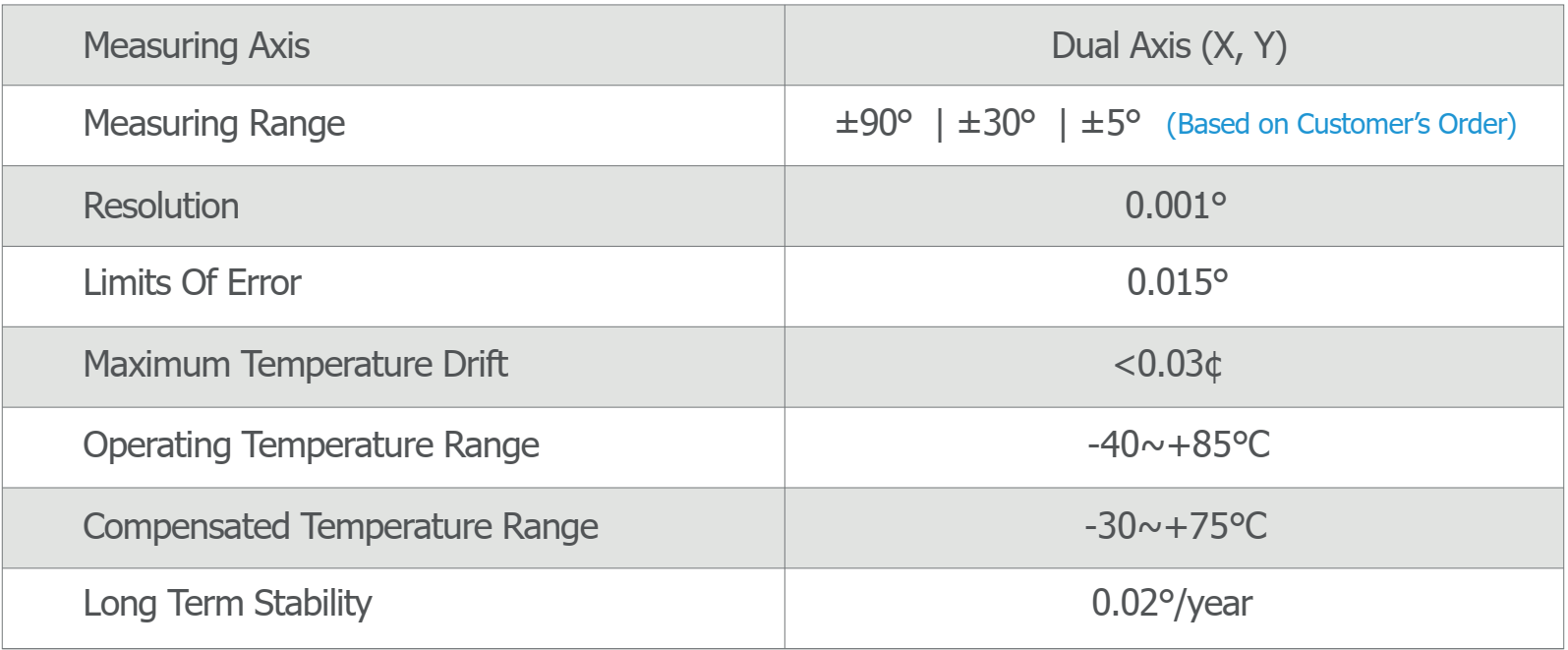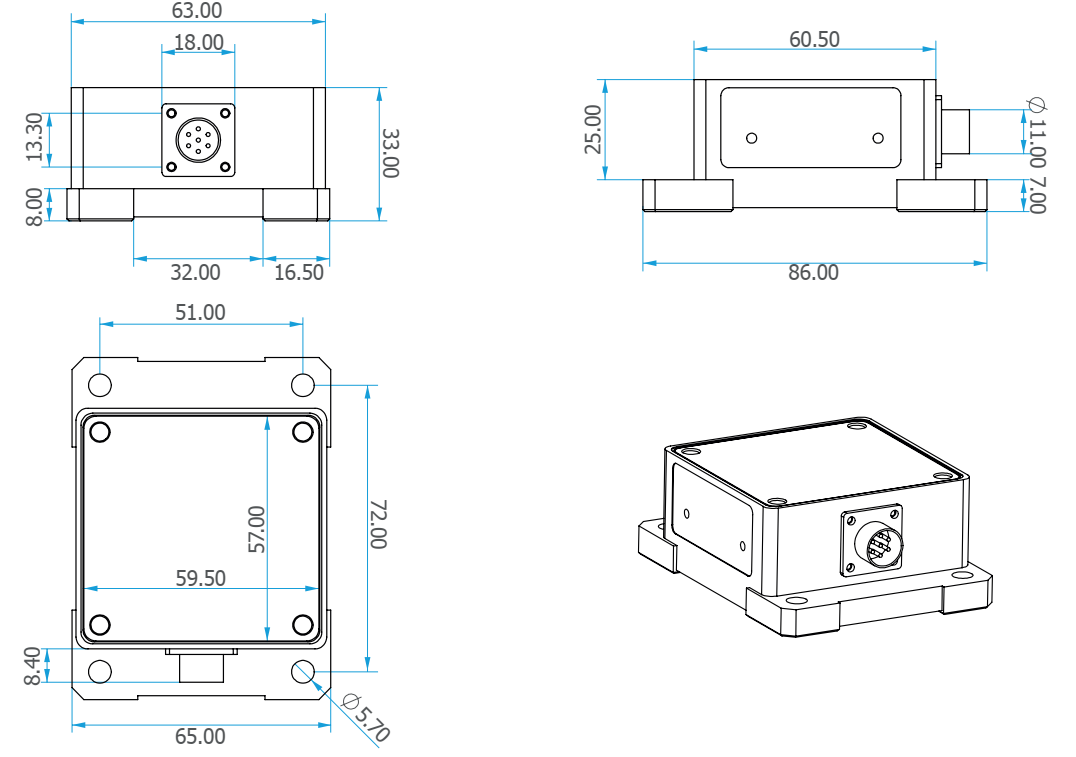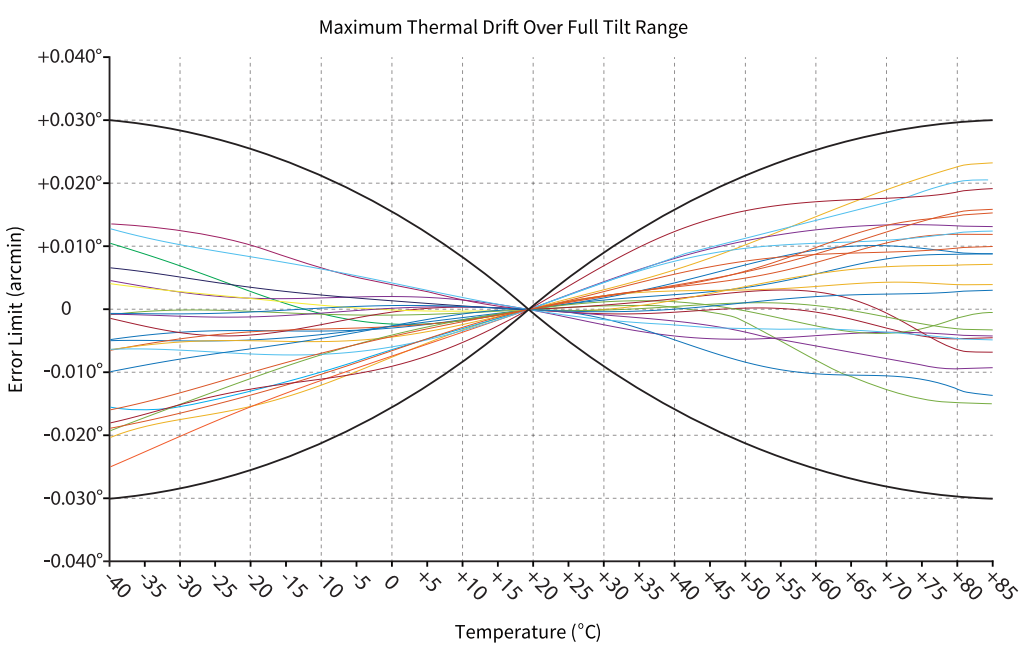
HORIZON Inclinometer
Features
-MEMS-based
-Full range in two axes (X,Y).
-Accuracy maintaining throughout the range with
-3D acceleration data processing.
-Accuracy of 0.015°.
-Compensated temperature -75 ~ +30°C or -85 ~ +40°C .
-Utilization of multi-factor temperature calibration technology.
-Maximum temperature error of 0.030°.
-Long-term stability of 0.02° per year.
-IP67 Standard.

Descriptions
The HORIZON inclinometer, designed based on micro-electromechanical sensors (MEMS), is a two-axis static inclinometer that measures angles with the local horizon within ±5° | ±30° | ±90° with an accuracy better than 0.015°. The sensor is tailored for operational environments and maintains accuracy throughout the ±180° measuring range due to 3D acceleration data processing. Hence, HORIZON delivers highly accurate output information.
Primarily used in construction, mining, power plants, oil and gas industries, telecommunication infrastructure, power transmission lines, and geology, the HORIZON sensor monitors surface and structure slopes and orientations with a high precision. It boasts resistance to shocks and vibrations, connectivity to data monitoring systems, and the ability to measure various angles and slopes, making it valuable in technical applications.
Utilizing multi-factor temperature calibration technology and temperature compensation based on the internal temperature sensor, HORIZON sensors achieve a high temperature stability compared to its competitors, with temperature error kept below 0.030° across the entire temperature range.
With resistance to electromagnetic interference and high long-term stability (0.02°/year), HORIZON sensors excel in noisy industrial environments. Another important and key features of this device, is its various outputs. HORIZON has RS٤۸٥ interface and based on customer's order, RS232 or CAN interface.
Product Specifications

Size Descriptions

Temperature Profile

Some Applications
-Setting axes in CNC machines and industrial robots
-Deflection measurement of huge pipelines
-Dimensional quality control of parts in steel industry
-Accurate alignment in the installation of rail structures
-Calibrating linacs and other sensitive medical equipment
-Local terrain adjustment of radars
-Testing and control of tables with several degrees of freedom